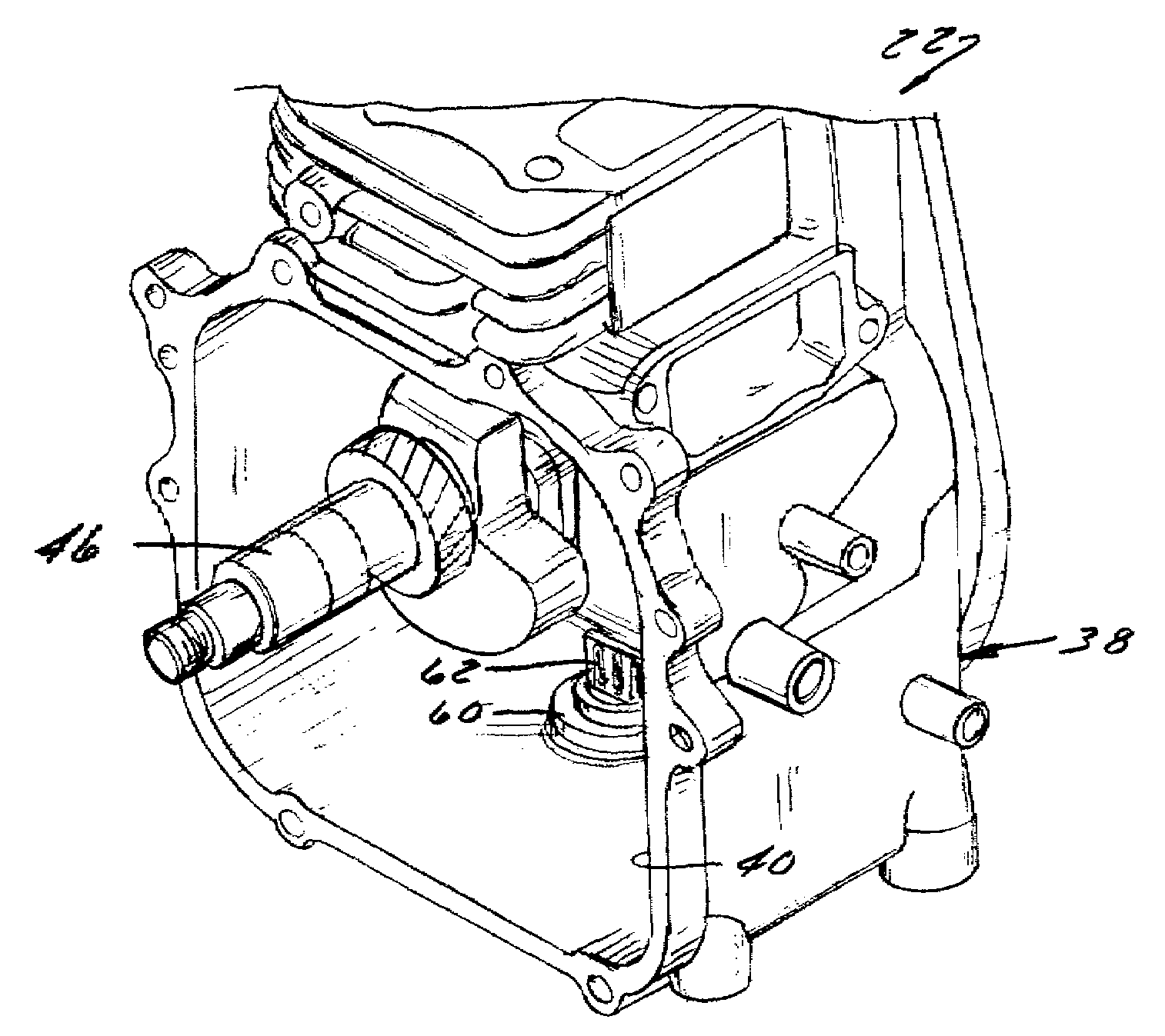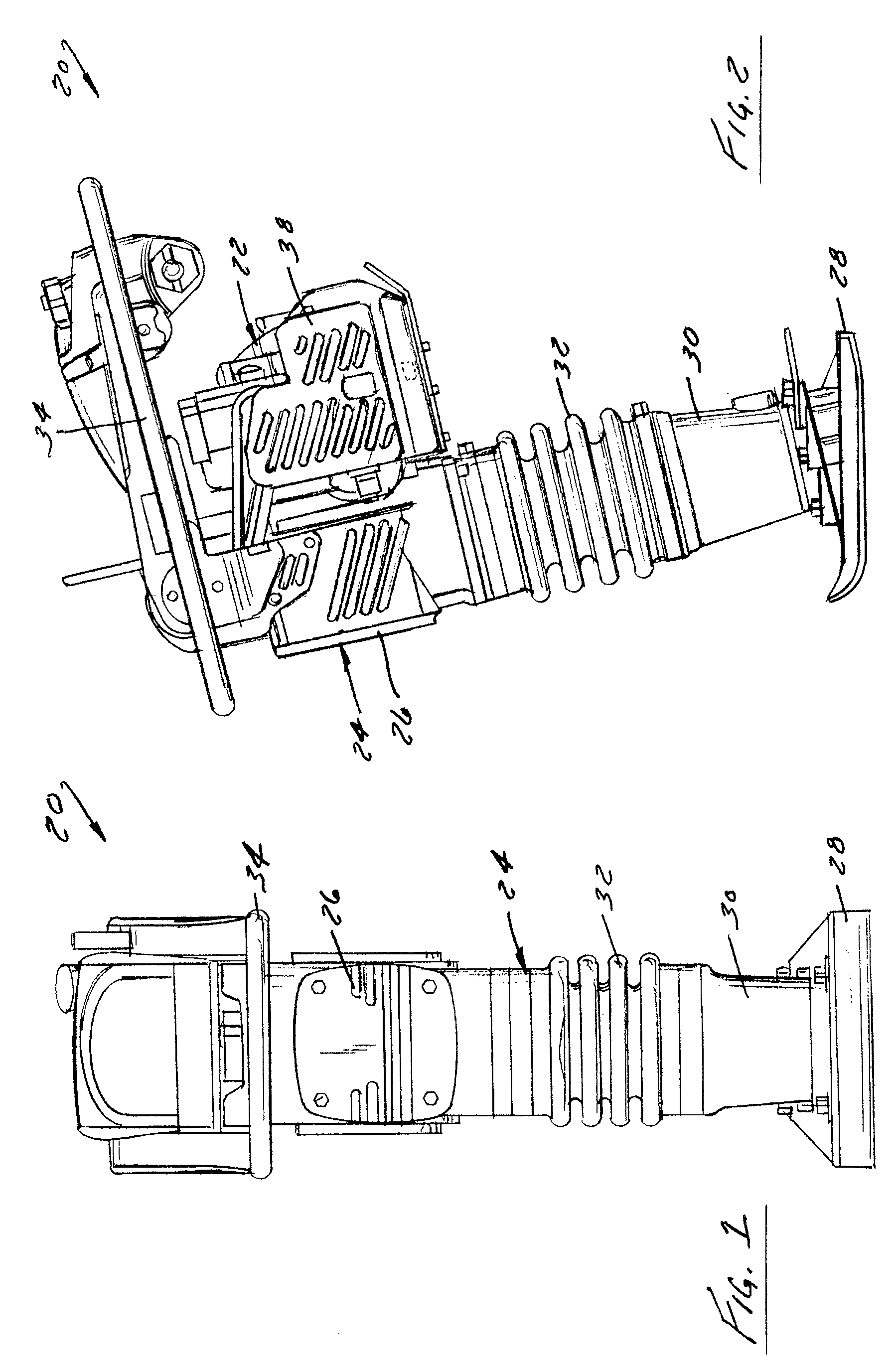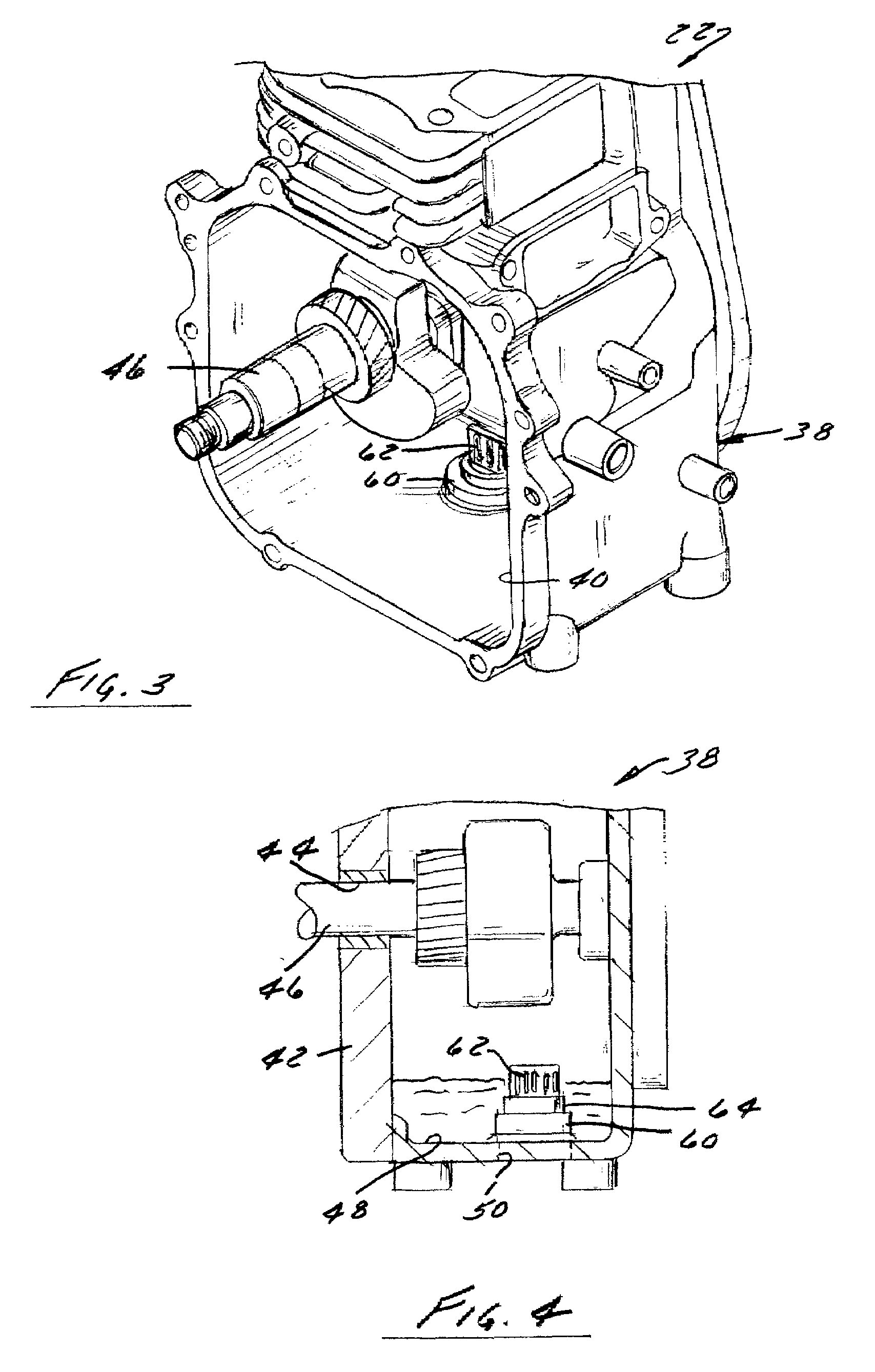Capacitance-based fluid level sensor
a technology of capacitance and fluid level sensor, which is applied in the direction of liquid/fluent solid measurement, instruments, machines/engines, etc., can solve the problems of reducing the reliability or even complete inoperability of a float-type fluid level sensor, affecting the use of float-type sensors, and agitating the fluid in the monitored spa
- Summary
- Abstract
- Description
- Claims
- Application Information
AI Technical Summary
Benefits of technology
Problems solved by technology
Method used
Image
Examples
first embodiment
[0031]Referring to FIGS. 5-9, a parallel plate capacitor-type fluid level sensor 62 constructed in accordance with the invention is supported in the housing 64. The sensor 62 includes an integrated circuit board 70, a probe 72, several leads 74, and a remote gauge 76. The gauge 76 is mounted on the rear of the rammer 20 in the vicinity of the rammer's other indicators and controls. Referring to FIG. 7, gauge 76 preferably includes an LED 78 or other indicator that provides a visual indication of a low oil condition, such as a flashing red light. It may also have an internal controller 80, such as an LED integrated circuit board, that coordinates operation of the motor's ignition system and the sensor 62. An additional lead 82 extends from the gauge 76 to the rammer's ignition system. That lead supplies power to the sensor 62 and gauge 76 and may also control the ignition system.
[0032]The integrated circuit board 70 of the sensor 62 contains the necessary electronics for receiving si...
second embodiment
[0040]The controller 180 in the gauge 176 is preferably configured to generate a low oil signal only when the sensor's oscillation period is below a frequency that is indicative of the absence of any oil in the capacitance bridges between the plates 190. Hence, in the second embodiment, the low oil warning signal is generated only when the level in the oil pan 40 is below the bottom of the plates 190. The sensor 162 in effect therefore senses the presence or absence of oil between the plates 190 as opposed to a level of oil between the plates 190. This approach significantly increases the reliability of the sensor 162 and facilitates its design when compared to an approach that attempts to determine the level of oil between the plates 190 because it does not require any sophisticated calibration of the sensor 162 to account for changes in oil properties or temperature.
[0041]In the illustrated example of a rammer, or in any other environment in which vibrations or other factors may l...
PUM
 Login to View More
Login to View More Abstract
Description
Claims
Application Information
 Login to View More
Login to View More - R&D
- Intellectual Property
- Life Sciences
- Materials
- Tech Scout
- Unparalleled Data Quality
- Higher Quality Content
- 60% Fewer Hallucinations
Browse by: Latest US Patents, China's latest patents, Technical Efficacy Thesaurus, Application Domain, Technology Topic, Popular Technical Reports.
© 2025 PatSnap. All rights reserved.Legal|Privacy policy|Modern Slavery Act Transparency Statement|Sitemap|About US| Contact US: help@patsnap.com



